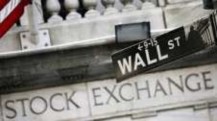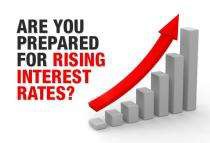What Australia should fear most
John Kelly

While most people in the world are scratching their heads in confusion and expressing their disgust at the election of Donald Trump as the next U.S. president, there was one important issue raised during the campaign that received little attention and which has thus far been ignored.
Macroeconomics is not very sexy and not something one would associate with Donald Trump, but in an article in the Financial Times on 28th September 2016, the author, Judy Shelton, put the case that Trump had, “broken a cardinal rule in U.S. presidential campaigning by openly questioning the effectiveness of the Federal Reserve.”
Shelton reports that during one of the presidential debates, Trump suggested that the US Federal Reserve had been engaging in politics by suppressing U.S. interest rates. The Fed had been “doing political things” with their interest rate policy and “creating a false economy.” Trump’s comments were seen by right wing conservative economists as supportive of their claims that the Fed was conspiring against them, forcing them to take on riskier positions which, if rates were to rise, would cause their investments to fail.
It’s easy to see why such an issue would not gain traction with a media soaking up all the juicy titbits that were flying high during the campaign. But if true, the ramifications would have important consequences for the U.S. economy and certainly go beyond the media’s interest in Trump’s more exciting personal life.
Trump’s comment is important because it raises the issue of future central bank independence. At the moment, sovereign currency issuing Governments impose, under political pressure, a series of voluntary restraints on their behaviour that mimic the actual restraints they faced when we had a convertible currency, i.e. before we abandoned the gold standard and floated our currency.
In short, it continues to issue debt to cover net spending. It’s all about fiscal discipline. They just don’t like thought of the central bank monetising the net spending. But in reality the so-called national debt, about which so much deceit is practiced, is no more than a voluntary restraint.
 But if ‘The Donald’ feels that ‘The Fed’ is deliberately suppressing interest rates against the interests of Wall Street, i.e. the U.S. Fed is not being independent of the politics of running the economy, he might move to limit its power by assuming greater control over monetary policy.
But if ‘The Donald’ feels that ‘The Fed’ is deliberately suppressing interest rates against the interests of Wall Street, i.e. the U.S. Fed is not being independent of the politics of running the economy, he might move to limit its power by assuming greater control over monetary policy.
If Trump is able to grasp the power of a fiat currency, he could well envisage his popularity soaring if he were to bring an end to the escalating debt by firstly, instructing the Fed to stop issuing bonds and monetise deficit spending.
He could then go one step further and instruct the Fed to gradually absorb the $20 trillion-odd on issue (America’s national debt) and present himself as America’s “debt saviour.”
It would amount to no more than juggling a few accounts at the central bank and it would give him sufficient goodwill to appease Wall Street with a lift in interest rates.
He could then have the US Treasury assume much greater responsibility for monetary policy which, in a democracy, it should have anyway. It is high time our politicians faced up to their electors and called the shots, rather than appointing an unelected body to do their dirty work for them.
But, in the area of debt, they would face a new obstacle. The debt issuance (bond sales) is not used to fund deficit spending. It is a place for Wall Street to take out some insurance by buying government bonds. The bonds enable their money to be safely parked in a risk free environment, albeit low return investment portfolio.
So, the final act would then be to instruct the Fed to create a term deposit facility for the banks and bond buyers to park their reserves and be paid interest at a rate that would lessen the pressure on Wall Street to look at riskier investments; a win-win, so to speak.
But here’s the kicker. If the US Treasury were to assume greater monetary control and the new U.S. administration was more willing to offer Wall Street a higher return in a term deposit thus enabling investors to avoid meddling in riskier products, it’s not hard to see what an increase in interest rates would do to a mortgage belt still recovering from the GFC. This would have far more serious consequences for the Australian economy than it would for America.
 An increase in rates in the U.S. would see international bond buyers’ desert Australian bonds in favour of term deposits available in the U.S. Australian bonds have always been an attractive investment and this should not mean a rise in rates here, but our Treasury Department, fearing the worst, would feel obliged to react and raise its bond rates anyway.
An increase in rates in the U.S. would see international bond buyers’ desert Australian bonds in favour of term deposits available in the U.S. Australian bonds have always been an attractive investment and this should not mean a rise in rates here, but our Treasury Department, fearing the worst, would feel obliged to react and raise its bond rates anyway.
A rise in the bond rate would give the commercial banks an excuse to raise mortgage rates.
And here is the ticking time-bomb. A rate rise here that impacts upon a mortgage belt which is already seriously over committed, would be disastrous for our economy. We have a government already hell bent on limiting spending, forcing the private sector to make up the difference by taking on more debt. Adding yet more pressure with a rate rise would be, for many mortgagees, the straw that breaks the Camel’s back. With private debt currently at 180% of GDP, the pressure could be explosive.
Such are the possibilities of a Trump presidency. Doubtless, there will be many more. If he can see a way to broaden his popularity with the masses by eliminating the debt while also appeasing Wall Street, it may be an opportunity too good to resist.
Source
-
The view from my garden, 9 Dec 2016 https://johnbkelly.wordpress.com/
-
The AIM network, 16 Nov 2016 http://theaimn.com/what-australia-should-fear-most/
John Kelly is an independent Australian commentator with his own website, who also writes articles for the AIM network.





























